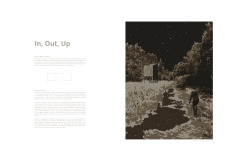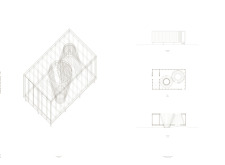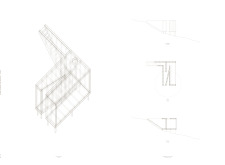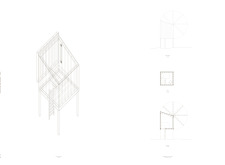5 key facts about this project
The structures are designed to enhance users’ connections to nature through their positioning, form, and materiality. Occupants move fluidly between enclosed and open areas, promoting an ongoing engagement with the landscape. The project successfully integrates architectural form with the natural context, encouraging varied experiences of space, privacy, and exposure.
Unique Interaction Between Spaces
The design of "In, Out, Up" uniquely employs elevation and orientation to extend interactions between the built environment and the surrounding landscape. While traditional architecture often relies on static views, this project integrates sensory experiences by inviting individuals to transition through different elevations and perspectives. For example, the room designed for stargazing elevates occupants above the ground plane, fostering a direct connection to the night sky. In contrast, rooms closer to the earth emphasize warmth and introspection. Such variations allow the project to cater to diverse user needs, making it adaptable for different contexts.
Materiality and Sustainability
The material choices in "In, Out, Up" play a critical role in achieving the project’s objectives. The architecture utilizes timber, glass, steel, and concrete to create structural integrity while also ensuring aesthetic coherence. Timber provides warmth and a natural connection to the environment, while glass panels offer transparency and light, enhancing the spatial experience. Steel elements contribute durability, especially in areas requiring structural support. Concrete forms the foundation, anchoring the structures to the site. This careful selection of materials not only addresses functionality but also aligns with sustainable design principles, using local and performance-oriented resources.
To explore the architectural plans, sections, and overall designs that further illustrate the thoughtful approach taken in "In, Out, Up," readers are encouraged to review the detailed presentation of the project. Understanding the unique architectural ideas behind the design will provide deeper insights into its innovative use of space and material.


























